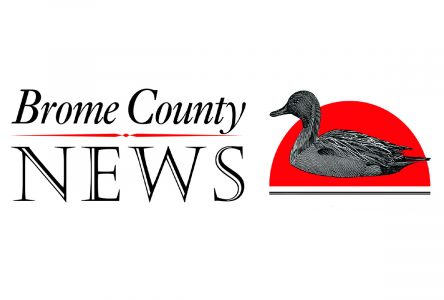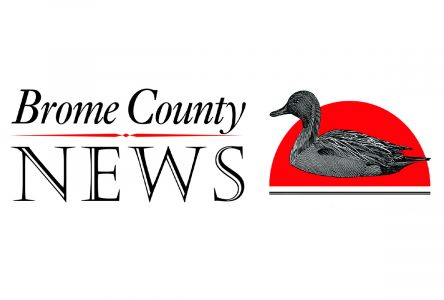Earlier this month, the Town of Sutton reorganized its First Responders’ services, limiting the services responders can provide to the PR2 level. The reorganization also calls for collaboration with the town’s fire department in responding to emergency calls, a new on-call response system, and more equal compensation for First Responders.
After learning of the changes, volunteers with the First Responders were left questioning the decision to limit the services they can provide to the population, and according to former coordinator Marie-France Lépine, who was recently let go by the town, some 25 out of the 28 volunteers have resigned from their position as a result.
There are eight priority levels established to classify a call to 911. PR-0 (high risk of cardias arrest), PR-1(immediate risk of dying), PR-2 (trauma), and PR-3 (potential risk of clinical deterioration) are considered emergency calls. PR-2 level of First Responder training addresses calls up to PR-2 while PR3 level of First Responder taking takes into consideration PR-3 priorities.
“Last year, we were missing personnel like everybody else. They are all volunteers. The pay is not the main reason we were working, we are working for the population. But because there were a lot of missed evenings, they said well we will use the firefighters to fill in the gaps, which was a good idea,” said Lépine.
Lépine emphasized that the First Responders have no issues with working alongside the firemen, the problem lies with having more personnel, but decreasing the value and level of service to the population.
“It was a good idea as long as they became PR3s, as long they come to our level of service not lower. In 2021, we had a lot of night shifts closed, but in 2022 it was getting down to a small percentage of night shifts that weren’t filled,” explained Lépine. “We were getting there. Plus, we were getting five more First Responders at the end of March and beginning of April which would have made our service 100 per cent, but the town did not wish to look into that one.”
Lépine went on to explain that PR3 level calls can lead to urgent medical emergencies and that the majority of these calls stem from the elderly population.
“It’s mostly very elderly people, falls, which are a non-urgent matter, but sometimes those non-urgent matters are more urgent than they appear to be,” she noted. “I’ve had falls that became cardiac arrest, falls that had a lot of blood, but that’s the PR3. We were there first and we could tell the ambulance if something is wrong.”
Jean-Pierre Boisvert, who helped form Sutton’s first First Responders group, and who continues to help by providing statistics and guidance, also agreed that it was a good decision to work with the firefighters, but to limit services to the PR-2 level would eliminate about 57 per cent of their calls.
“It was was a good idea to take two First Responders for example and split them between Thursday night and Friday night. We would have two shifts half loaded for the duty. That would be good if the firefighters can jump in if there is a call coming in,” explained Boisvert. “If there is a call coming in, one of them just has to say I’m going and he’s going to help the First Responder at a service call. That was a great idea, but the problem is that they are trained at half of the level; 57 per cent of the calls will not be answered by the firefighters because at the PR-2 level they cannot answer all of those calls.”
We had had 385 calls in 2021. Reducing the response to PR-2, the only calls we would responded to only 155 calls,” added Lépine. “We wanted to keep the same level that Knowlton has due to the similar size of the region we cover.
Boisvert mentioned that he has all of the data about how limiting the services to the PR-2 level would affect the population, but that the administration did not reach out to him for what he deemed important information to take into consideration when making decisions that affect the population. By limiting the level of services to the PR-2 level, PR-3 level calls will no longer be forwarded to the First Responders and those calling 911 will have to wait for the ambulance.
“More than half of those people are aged between 70- and 100-years-old. Their call to 911 will be evaluated as urgent, urgent means I need help now, not in 15 minutes,” he noted.
Both Lépine and Boisvert said that they tried reaching out to the administration for answers before and after the official decision was made, but were never provided with a clear response or any response at all, including at an information meeting the town called on March 1.
“At the March 1 meeting, they never thought they’d have so many First Responders standing in the room and they could not answer our questions. Twenty-eight First Responders were there asking what is going on,” said Lépine. “The current administration judged that it was unacceptable to have holes in our schedules, but were not willing to help fill in those gaps with more First Responders. They weren’t ready to help and it’s a matter of having First Responders at level 3.”
As a result, Lépine said that 13 out of the 28 volunteers handed in their resignations and when a second meeting was called about a week later and it was made clear that the town had made its final decision, another 12 personnel handed in their resignations.
Both Lépine and Boisvert said that at the end of the day, the decision does not take into consideration the needs of the population.
“They are cutting off people from offering their services. All those hours that people have given to the town all of those years, there is really a lack of reason,” said Boisvert. “I just don’t understand.”
“We’re not going to be paid and go lower. We’re not going to stand and wait for 155 calls when we can do 385 calls, we are not helping the population. The population is elderly and they need a lot more help, they are PR-3s and a lot of times they are important,” emphasized Lépine.
The Town of Sutton’s position, with the support of Quebec’s Ministry of Health, is to limit the services at the PR2 level of training to ensure that 100 per cent of emergency calls are fulfilled up to the PR-2 level and to hopefully build the services back up to PR-3 once this is accomplished.
“What the Ministry says is that we prefer to have a service at 100 per cent rendered at PR-2 than 80 per cent at PR-3. When you look at the levels, you think that P3 is more than P2, but as a matter of fact the services rendered that really have a scare on their life is PR-0, PR-1, and PR-2,” said Robert Benoit, mayor of Sutton, in an interview with Brome County News last week.
To address the lack of first responders’ personnel, the town wants a collaboration with Sutton’s firefighters, around 16 of whom already have their PR-2 level training, and to bring both groups under the direction of Don Mirault, director of public security, to establish a team effort.
Combined with a new on-call response system that will notify both First Responders and the firefighters on their cellphone when a call comes in that no longer requires responders to wait on a 12-hour shift, Benoit explained that the motivations of the town when making these decisions was to provide a service at 100 per cent to the population and to make things more efficient for the first responders to fulfill their calls. “I want the most vital calls to be responded to at 100 per cent and I won’t accept anything lower than that,” said Benoit at the time.

